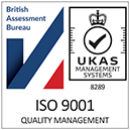Patient registries are organised systems that use observational methods to collect uniform data to evaluate specified outcomes for a population defined by a particular disease, condition, or exposure. They can be used to serve one or more predetermined scientific, clinical, or policy purposes [1,2]. Patient registries are classified based on the definition of their populations [1], including:
- Product or device registries: include patients who have been exposed to a specific pharmaceutical product or medical device.
- Health service registries: include patients who have had a common procedure, clinical encounter, or hospitalisation.
- Disease registries: include patients who have been diagnosed with the same disease/condition.
Pregnancy registries
In addition to the above, there are pregnancy exposure registries. These registries collect health information from women who take prescription medicines or vaccines during their pregnancy [3].
Information is also collected on the newborn and birth outcomes, which is then compared with women who have not taken medicine during pregnancy. The main purposes of pregnancy exposure registries are to help improve safety information for medicines used during pregnancy and to update product labelling accordingly [3].
Registries and real world data
A patient registry can be used as a powerful tool in many ways with different benefits to different stakeholders. Registries generate real world data (RWD), which in turn can generate real world evidence (RWE) to inform regulatory decision making [4].
RWD gathered via patient registries can be used to answer research questions in the form of studies. Insights generated from these can often be used to answer key research questions, including understanding the natural history of a disease, variations in treatment and outcomes, and describing care patterns [4].
While regulators prefer randomised controlled trials (RCTs) to support marketing authorisations, there can be situations where RCT data is limited or not ethical/feasible, and patient registry data may be able to provide evidence to support regulatory decision making [5].
In August 2023, the FDA issued the final version of the industry guidance document on considerations for the use of RWD and RWE to support regulatory decision-making for drugs and biological products [6]. While this emphasises the prominence of RWD and RWE, it is also important to note that the quality of the data source is key.
Underusing patient registries
Patient registries, despite being a rich source of data, are greatly underused. The main reasons include heterogeneity in registry design within individual disease areas, unreliable/low data quality, and the overarching lack of collaboration at national and international levels [5,7]. These reasons have given rise to inefficiencies and duplication of effort. Attention needs to be paid to ensure the design of a registry is robust and thought through, that it collects meaningful data, and limitations of the dataset are acknowledged in a clear manner.
The European Medicines Agency (EMA) set up an initiative in 2015 to improve the use of existing registries and facilitate setting up new high-quality registries if none provide an adequate source of post-authorisation data for regulatory assessments, especially post-authorisation safety and effectiveness studies [7]. The EMA also appointed a task force, and multi stakeholder consultations and disease-specific workshops were conducted as part of this initiative [5].
It is often time-consuming to produce patient registries of high quality with meaningful data. The use of a common data set, data format and terminology could help analyse and interpret results from different registries. Lack of harmonisation across registries requires mapping of data elements which is time and resource intensive. Thus, agreement on core data elements and formats is needed so that it can be implemented at the design or amendment stages of registries. Cystic fibrosis, multiple sclerosis, CAR T-cell therapy and haemophilia are examples of therapy areas where there are lists of agreed core data elements available [8].
COVID-19 impact
Following the COVID-19 global pandemic that kicked off in early 2020, there was an immediate and increased demand for patient registries with the aim to understand and identify important factors related to the virus, recognise risk profiles, and predict treatment success in those patients who were hospitalised [9]. This also created a spike in the set-up of other patient registries requiring rapid development and deployment of partially harmonised, international patient registries, therefore reinventing established patient registry timelines [10]. Partnership with patient organisations demonstrated the critical nature of inclusive patient involvement.
Improving data quality of registries
Homogeneity, data sharing and adopting a more cohesive approach to patient registry development could lead to many benefits including, improved utilisation of limited resources, improved ability to rapidly collect meaningful data, and shortened response times to generate RWE [10]. It is therefore important to consider a robust study design, definition of data variables, awareness of the data typically collected (therefore available) in routine clinical practice, consistency and usage of a reliable and agile platform to collect the data when designing and implementing meaningful patient registries.
Furthermore, it is useful to keep the ‘end goal’ in mind on what the purpose of the registry is, so that its uses can be maximised, enabling further studies to be conducted using subsets of the registry data. This will generate important insights which will contribute to a better understanding of the natural history of diseases, treatments, clinical outcomes, and patient reported outcomes.
Cisiv’s Baseline Plus is a fully integrated platform with high flexibility, built for the purpose of collecting real world data. It comprises of a single platform, with a complete set of tools and workflows that can be configured and customised. Cisiv has built a number of international registries capturing data of more than 15,000 patients, and multiple protocol variations and amendments, which have delivered real world data and made an impact in the real world. In addition to electronic data capture (EDC), the platform can capture patient reported outcomes and obtain informed consent from patients electronically, reducing patient burden. Cisiv have ongoing success in helping Pharma and life science organisations to design, set up and execute patient registries.
If you find this article interesting and want to learn more about building patient registries, speak to an expert here.
References:
- Gliklich RE, Dreyer NA, Leavy MB, editors. Registries for Evaluating Patient Outcomes: A User’s Guide [Internet]. 3rd edition. Rockville (MD): Agency for Healthcare Research and Quality (US); 2014 Apr. Executive Summary. Available from: https://www.ncbi.nlm.nih.gov/books/NBK208619/ [accessed 05 September 2023]
- FDA website: Patient-driven registries https://www.fda.gov/media/148496/download#:~:text=%E2%80%9CAn%20organized%20system%20that%20uses,and%20that%20serves%20one%20or [accessed 05 September 2023]
- FDA website: Pregnancy registries: https://www.fda.gov/science-research/womens-health-research/pregnancy-registries [accessed 05 September 2023]
- Gliklich RE, Leavy MB, Dreyer NA, editors. Registries for Evaluating Patient Outcomes: A User’s Guide [Internet]. 4th edition. Rockville (MD): Agency for Healthcare Research and Quality (US); 2020 Sep. Chapter 1, Patient Registries. Available from: https://www.ncbi.nlm.nih.gov/books/NBK562581/ [accessed 05 September 2023]
- McGettigan P, Alonso Olmo C, Plueschke K, et al. Patient Registries: An Underused Resource for Medicines Evaluation : Operational proposals for increasing the use of patient registries in regulatory assessments. Drug Saf. 2019;42(11):1343-1351. (https://pubmed.ncbi.nlm.nih.gov/31302896/) [accessed 05 September 2023]
- FDA website: Guidance document – Considerations for the Use of Real-World Data and Real-World Evidence To Support Regulatory Decision-Making for Drug and Biological Products (August 2023) (https://www.fda.gov/regulatory-information/search-fda-guidance-documents/considerations-use-real-world-data-and-real-world-evidence-support-regulatory-decision-making-drug) [accessed 18 September 2023]
- EMA website: Patient registries: https://www.ema.europa.eu/en/human-regulatory/post-authorisation/patient-registries [accessed 05 September 2023]
- Olmo CA, McGettigan P, Kurz X. Barriers and Opportunities for Use of Patient Registries in Medicines Regulation. Clin Pharmacol Ther. 2019;106(1):39-42. (Barriers and Opportunities for Use of Patient Registries in Medicines Regulation – Olmo – 2019 – Clinical Pharmacology & Therapeutics – Wiley Online Library) [accessed 18 September 2023]
- Arienti C, Campagnini S, Brambilla L, et al. The methodology of a “living” COVID-19 registry development in a clinical context. J Clin Epidemiol. 2022;142:209-217. (https://www.ncbi.nlm.nih.gov/pmc/articles/PMC8590739/) [accessed 18 September 2023]
- Wall D, Alhusayen R, Arents B, et al. Learning from disease registries during a pandemic: Moving toward an international federation of patient registries. Clin Dermatol. 2021;39(3):467-478. (https://www.ncbi.nlm.nih.gov/pmc/articles/PMC8432911/) [accessed 18 September 2023]


